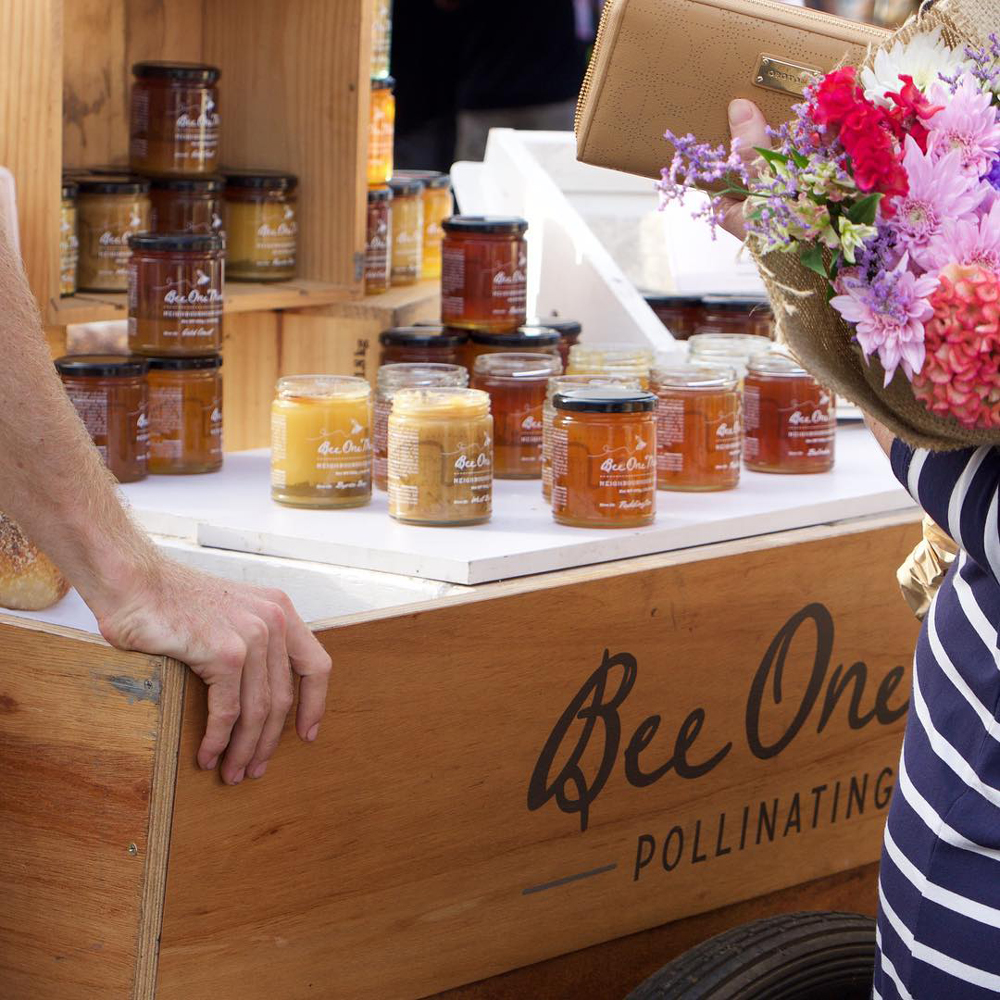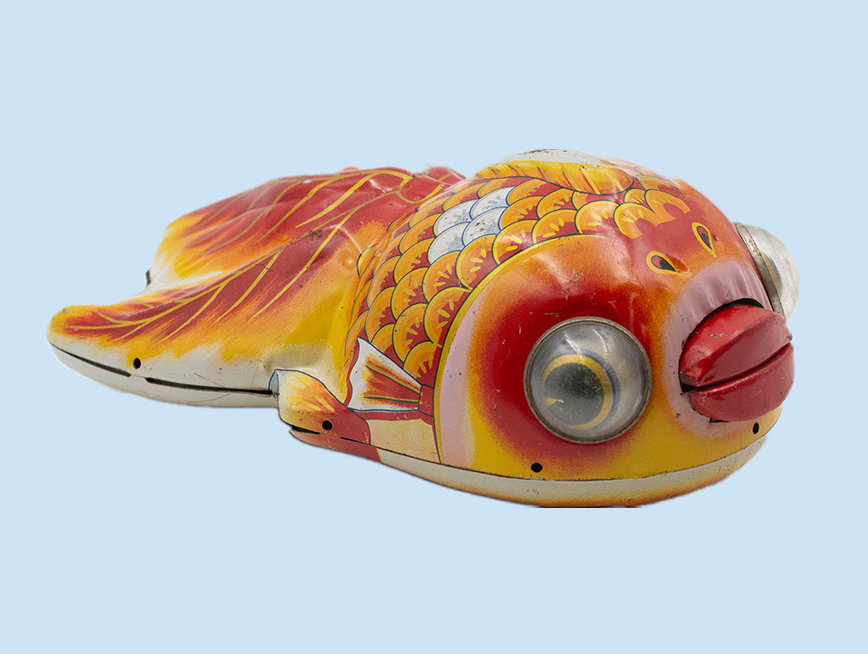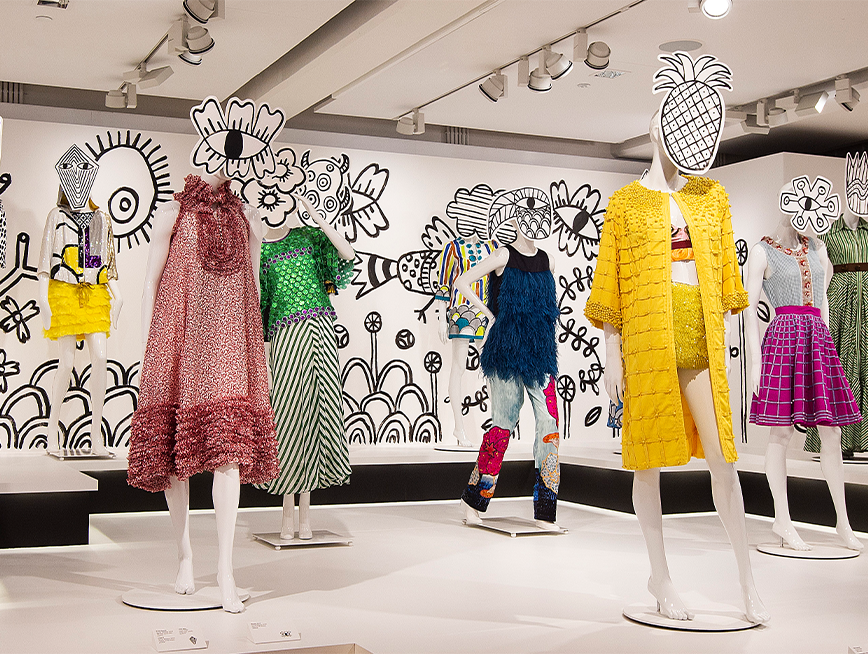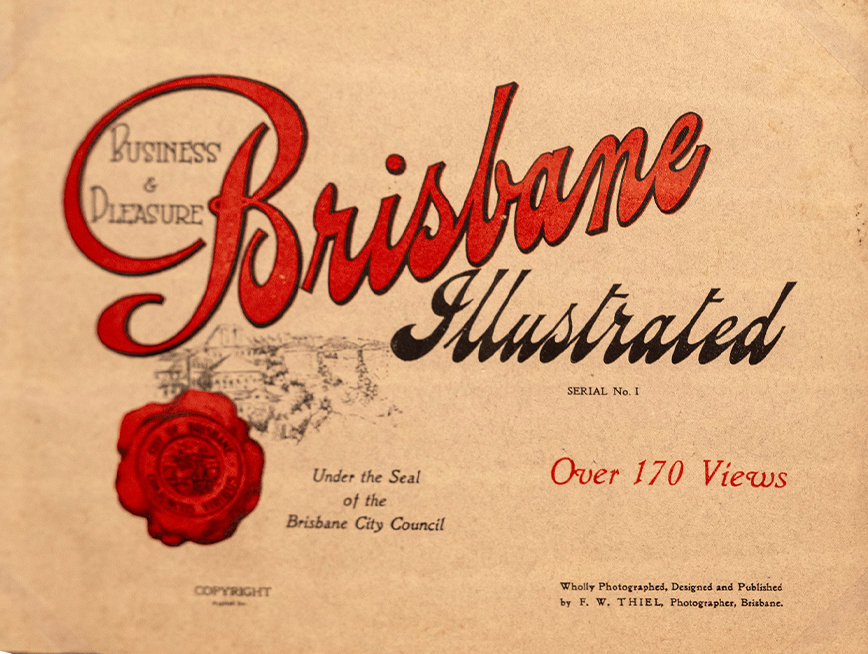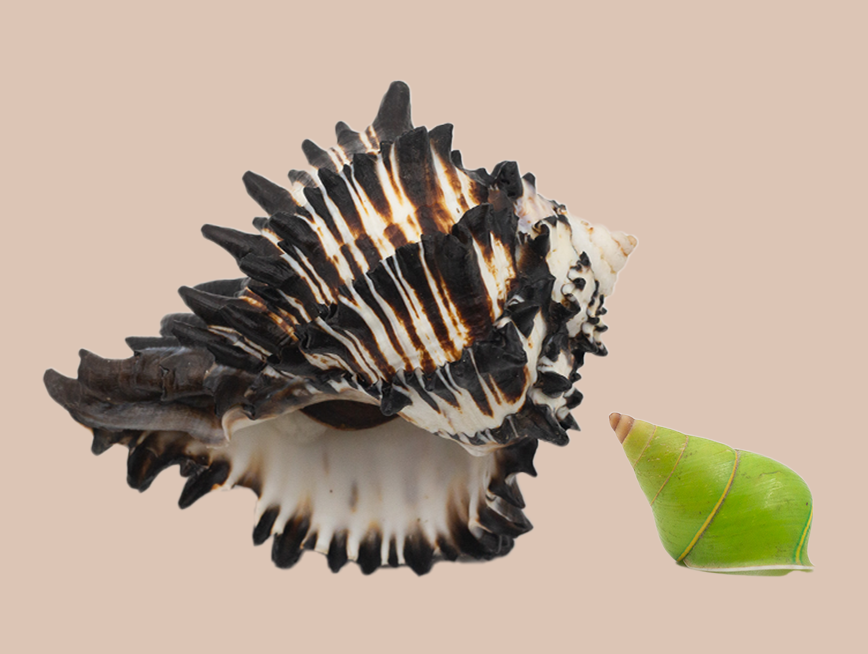4 JUNE 2020
To check in on how our local production in Brisbane is travelling right now, we caught up with Bee One Third, whose mission is to pollinate change by connecting communities with the reality of what bees do for our food system. With 150 beehives under their stewardship on the east coast of Australia, they harvest honey from across Brisbane including rooftops in the city, Red Hill, Hamilton and Roma Street Parklands to name a few.
Explore a range of Bee One Third products at MoB Shop and taste the unique floral diversity of your suburb!
You started Bee One Third in 2012. What drew you to beekeeping?
A desire to learn to grow my own food and teach community about the importance of growing their own food. During the first six months of growing my food garden at home, I was reading a lot about the importance of bees in our ecosystem. To be perfectly honest, I wasn’t having a great deal of success with growing food. My kale was burning, and my brussel sprouts were simply not fruiting, so the idea of keeping bees became very appealing.
Can you tell us about the current state of bees and why they are so essential to everyday life?
Bees are essential to life due to their incredibly efficient ability to provide pollination to flowers of all different shapes and sizes. Bees gain their two main food sources from flowers, being nectar, their carbohydrate (honey), and pollen, their protein and mineral source. I find it fascinating, knowing that flowers naturally produce pollen as their genetic membrane, required to be transferred between flowers to ‘cross pollinate’ genetics between flower species and sibling species. Flowers will secrete the nectar, the sweet-scented sugar liquid, into the base of their flower cup, beneath the pollen stamens to attract the bee in to visit the flower. While the bees are feeding on the sweet nectar, they rub their hairy bodies over and around the pollen stamen, covering their bodies in billions of small pollen granules. The bee will then leave the flower after feeding to visit the adjacent flower or tree to find more food, repeating the cycle.
Without proper pollination, we would lose access to over 65 per cent of our agricultural production here in Australia, and a third of our global food supply. Without pollinators, we simply would not be able to pollinate the flowers required to feed the world’s growing population.
With regard to bees being under threat, it’s a serious issue. In Australia we are relatively lucky, as we are positioned on a sea-locked land mass meaning that any pests, diseases or threats to our bees are kept largely at bay. There is, however, always a danger that we will have an incursion at one of our many seaside ports where a disease or pest will be introduced.
Globally, bees are under pressure and threat from a range of perspectives. The use of industrial chemicals to grow food is an ever-increasing threat. When chemicals are sprayed on plants and flowers and bees visit these flowers, they are ingesting the chemicals and delivering them back to their colonies, often storing the chemical residues into the food source, later to be fed to their young emerging population.
Partner this pressure on the colony with a constant barrage of pests and insect enemies, and the colony as a whole does not have an easy pass.
Add to these issues an ever-decreasing availability of diverse ecosystems, and you’ve got yourself a perfect storm as it would seem. Bees require a wide variety of foods, including minerals, amino acids, proteins, carbohydrates, fatty acids, long chain amino acids and more, which are commonly found in bio-diverse regions. Without them, the health and wellbeing of a colony is sure not to flourish, as it is with the human diet—a life spent eating simple food like steak, chips and bread will only end in health complications.
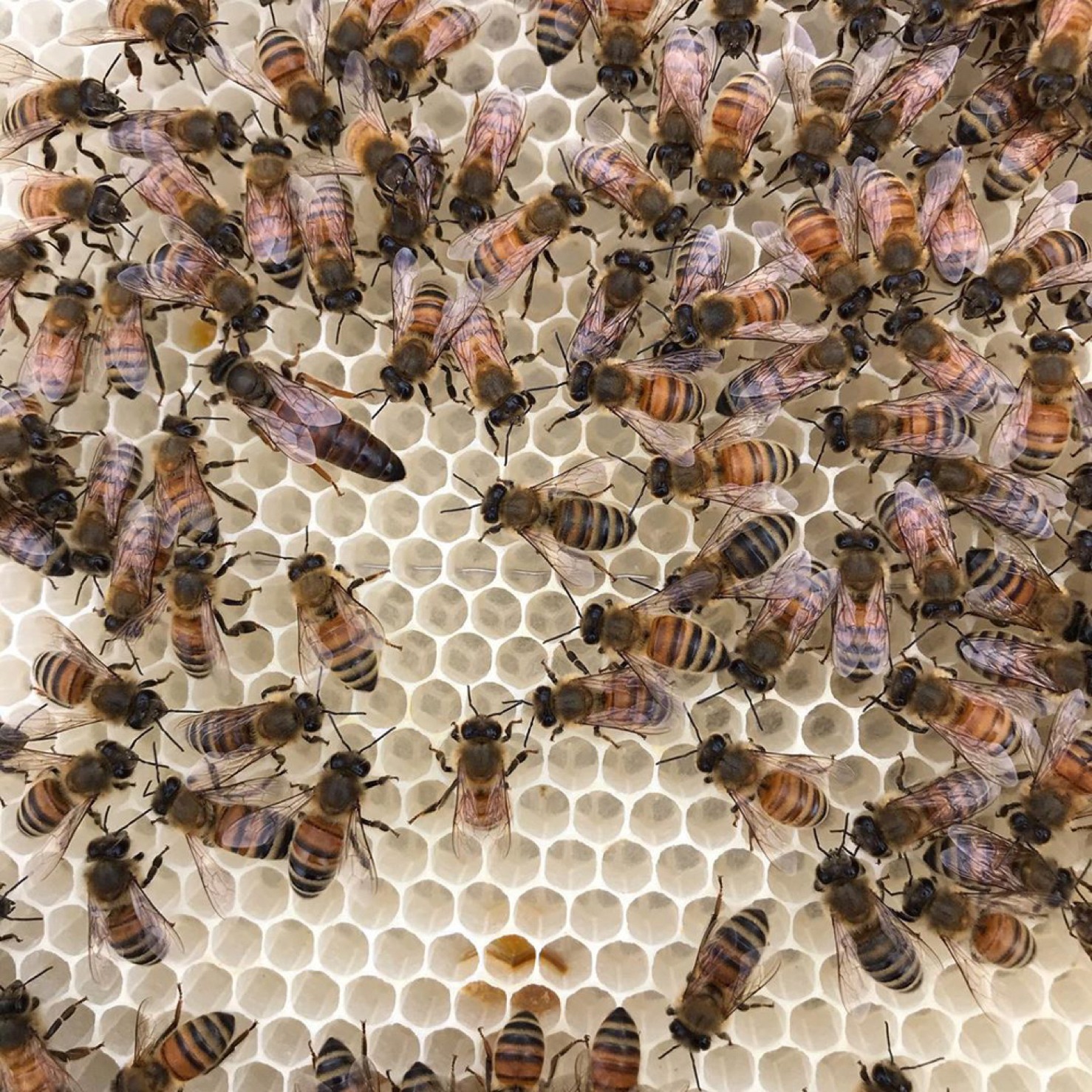
With recent social isolation measures and food shortages, we’re seeing people reconnecting with gardening and interested in growing their own food. How can the home gardener contribute to the wellbeing of bees?
I’m loving all of the photos of gardens and new pollinators visiting our communities’ gardens. It is so promising to know that bees are healthy in the suburbs and flourishing through this strange time.
The best way for us all to help bees comes down to providing three basic needs.
Water – Create a watering station for bees and insects to hydrate. This can be as simple as a bucket of water with a clean rag or towel end submerged in the water and hung over the edge of the bucket. Or, if you want to get creative in the garden, you can build a lily or water chestnut pond that the bees can visit. Bees require a solid surface to land on when drinking water, like soil, sand, a lily or towel.
Food – Plant out your garden with an array of flowering plants. Bee friendly plants are ideal, providing a range of pollens and nectars for the bees to feed on. Let your garden plants go to flower before pulling them out. Feed the bees while creating seeds for next season’s planting! A great example of this is basil. Bees love basil flowers, and when they have finished visiting them, you’ll be left with some basil seeds to give out to friends or plant again in summer!
Habitat – Native bee hotels are a great way to host solitary native bees in your garden. Native bee houses can be purchased from a range of makers, but in essence they are really easy to create with things from your garden. Research ‘How to make native bee hotels’ online and you’ll be surprised that within six months, you’ll see insects have moved in.
All in all, every one of us has the potential to help pollinate change.
The food scene in Brisbane has really expanded in recent years with people engaging more with where their food is coming from. What does the future of food sustainability look like to you?
It’s fantastic isn’t it? Brisbane has really banded together to prop up the food and hospitality scene. We as a collective consciousness will be feeding ourselves from local farms more often, visiting local farmers markets like Northey Street Organic Markets (on every Sunday morning, it’s the best in my opinion and surprisingly affordable when shopping in-season). And recognising the effect we all can have on reducing waste in our households and daily lives. Sustainability is a big word, but it’s the small things we all do that make a big difference.
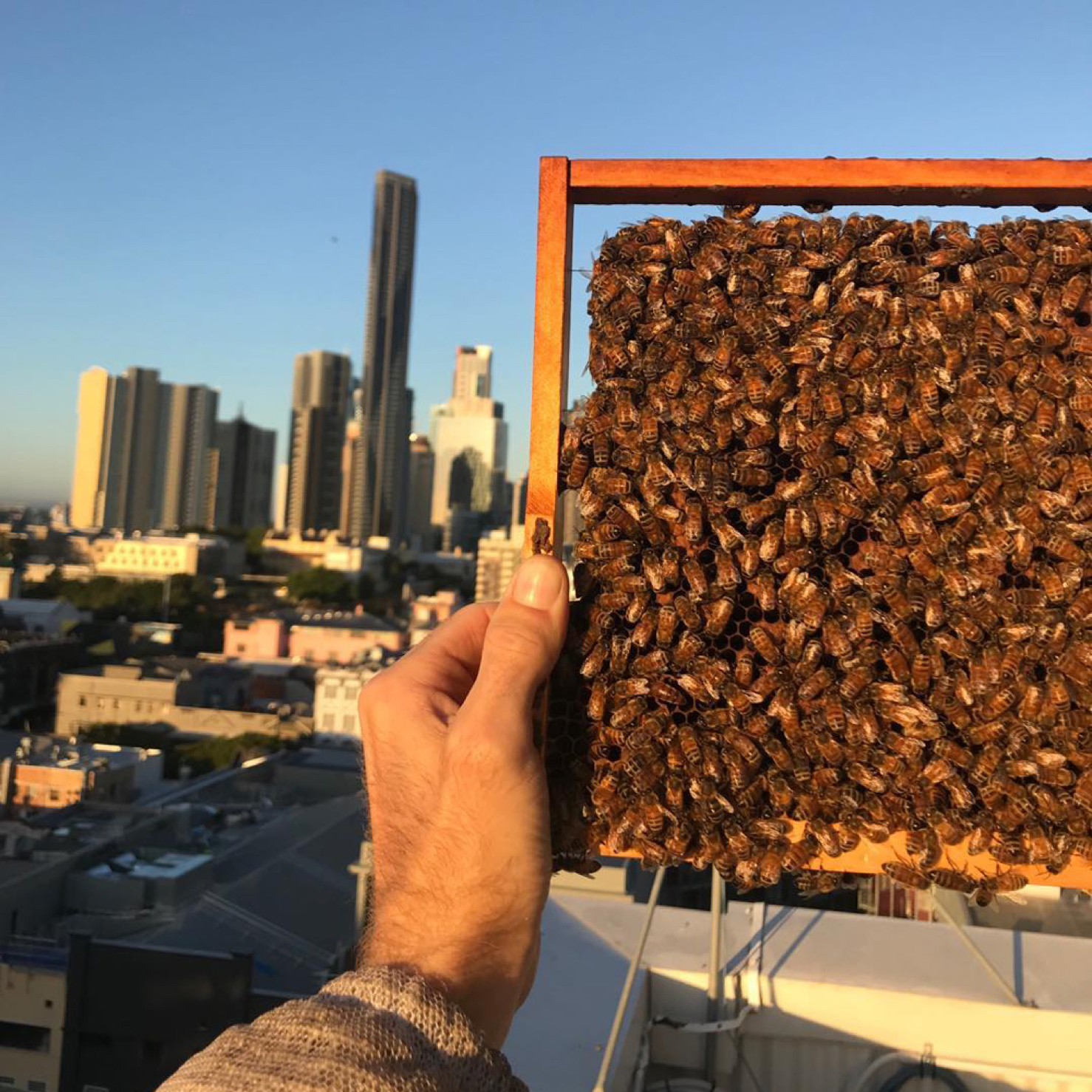
Can you share your favourite dish/recipe to make using Bee One Third products?
There are so many I can think of, too many to list! My favourite however would hands down have to be sourdough crumpets with salted butter, a generous slab of Byron Bay honeycomb and sprinkled with half a teaspoon of our soft dried bee pollen. If you’re not into crumpets, then you must have a go at combining our recent batch of naturally creamed Northern Rivers honey with a warm seasonal fruit porridge or bircher. Delicious and so simple!
How do you integrate sustainability into your business? Why is this important to you?
Built within our core values as a small business centred around sustainability, we have many practices within the business that endorse and put sustainability into action. From a 100 per cent waste free production cycle, we use every single product from the hive, from the honey, beeswax, propolis, pollen and even the bees that follow us home to the factory! We put them all to use in a range of products or feed the resources back into the beehives for next season.
We are currently in the process of pitching to our landlord for a fully solar powered panel energy system for our factory. We utilise skylights for lighting to save on power and we have a great relationship with a broad range of waste and recycling services.
We utilise glass for all of our core range of products and high quality re-usable plastic containers for our honeycomb packaging. We also pride ourselves in the relationships that we have formed with our suppliers to help them integrate more sustainable practices, because, after all, it’s the collective power and effort that will ultimately be the shift in global consciousness around food and Mother Nature.
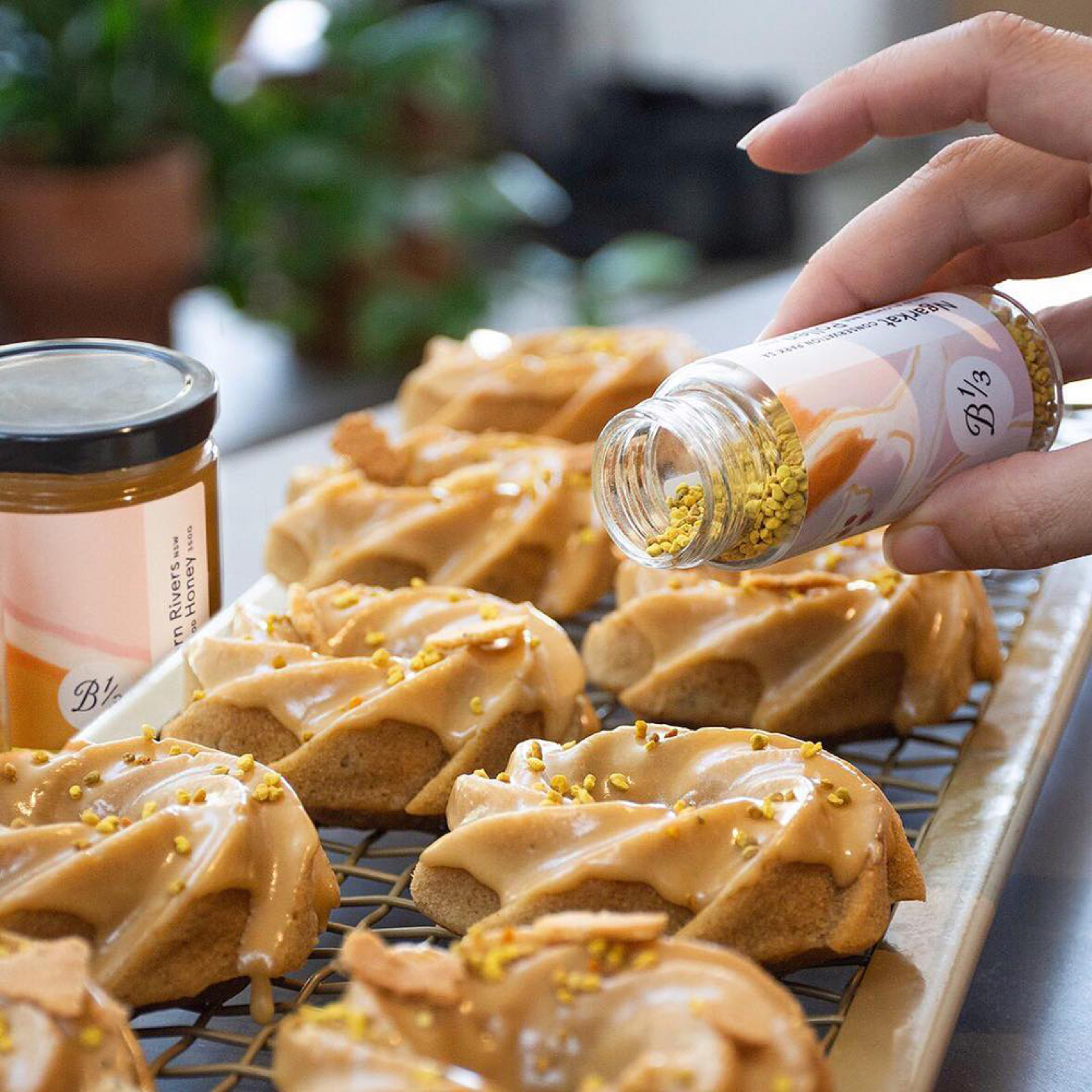
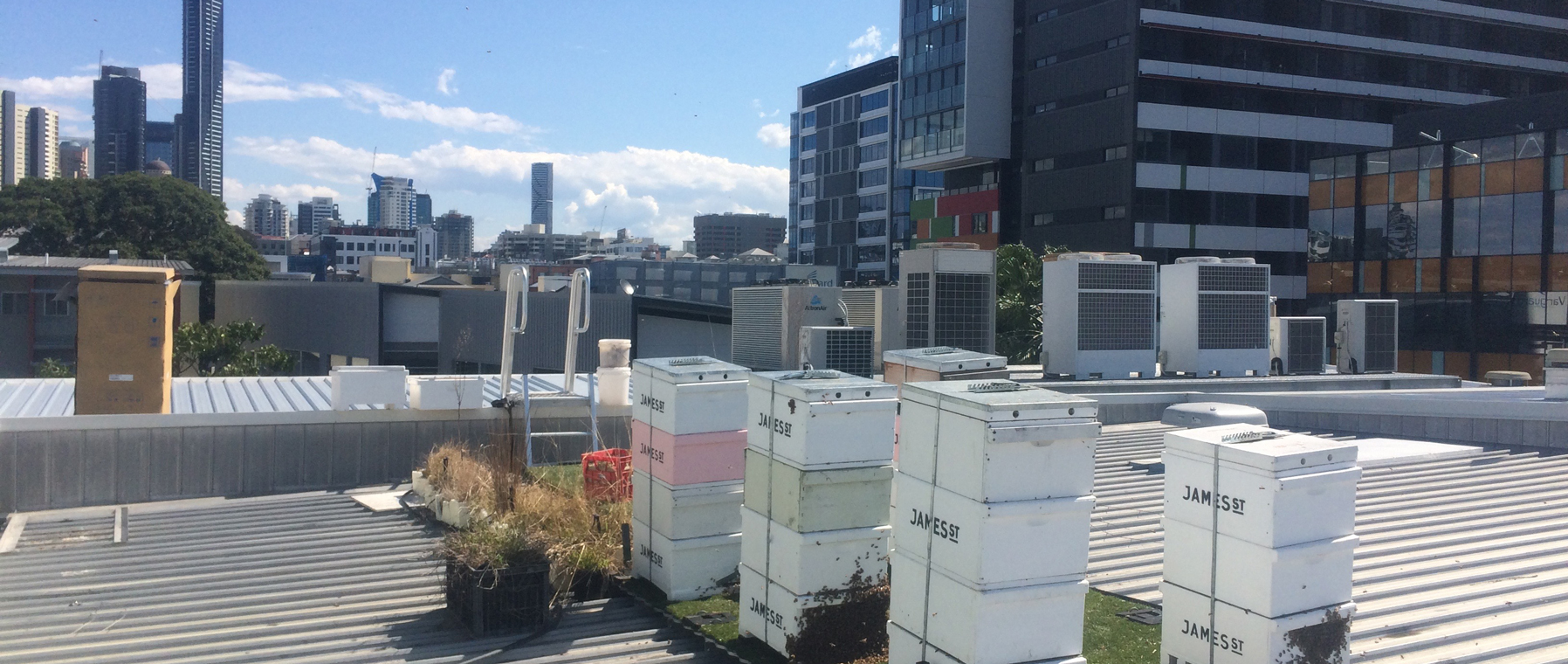
With over 150 beehives under your care, you must be kept busy! What does a day in the life of a beekeeper look like?
It’s an interesting one, really. We operate on a fortnightly and three-week basis, depending on what time of season it is. In the busier times (spring through late summer), we are checking our hives every two weeks, which means three days per week of checking hives all around town. Early mornings are a must, as the early bird catches the worm in summer. Our days begin at 6am where we are into our hives, pausing for morning tea around 9.30am and continuing on until midday. During the heat of the day, we either visit shaded apiary sites or alternatively take an admin break, where I respond to emails and write notes from the morning’s hive inspections.
When you are working with bees, you must react to the circumstances in the moment, otherwise you may miss the opportunity to do so. Without acting in the moment, the hive will be left for another two weeks, causing the issue to potentially grow worse down the line.
From around 2pm, we return to checking our hives until we clock off at 4pm, returning to the shed to load up for the next day’s hive checks. When we are not working hives and tending to the bees, we are extracting honey in the shed, preparing honey for a wide variety of sizes and applications. We produce, extract, bottle and deliver all of our products in-house to our amazing pollination partners, which I’ve discovered requires a huge amount of organisation, record keeping and space to do.
A day in the life of a beekeeper is never boring, especially when we have such a fantastic landscape to work within.
Career highlight to date?
Being invited to collaborate with New Zealand artist Anne Nobel as part of her Gallery of Modern Art (GoMA) APT9 artwork on bees. Anne approached me at the beginning of 2018 to help organise the installation, onsite observation and care-taking of a live beehive that was placed inside the gallery for five months. The bee colony with a new season queen was introduced into an open cavity between two panes of glass, then placed inside the confines of a giant artwork that Anne designed and made where they were left to establish themselves.
The bees were able to exit through a 2.5m clear Perspex runway tube to collect food for the colony. The artwork was opened five times per day for the public to see inside, where a thriving colony of bees had grown into the open space, becoming larger and more populated every week throughout the exhibit. A definite career highlight, without question!
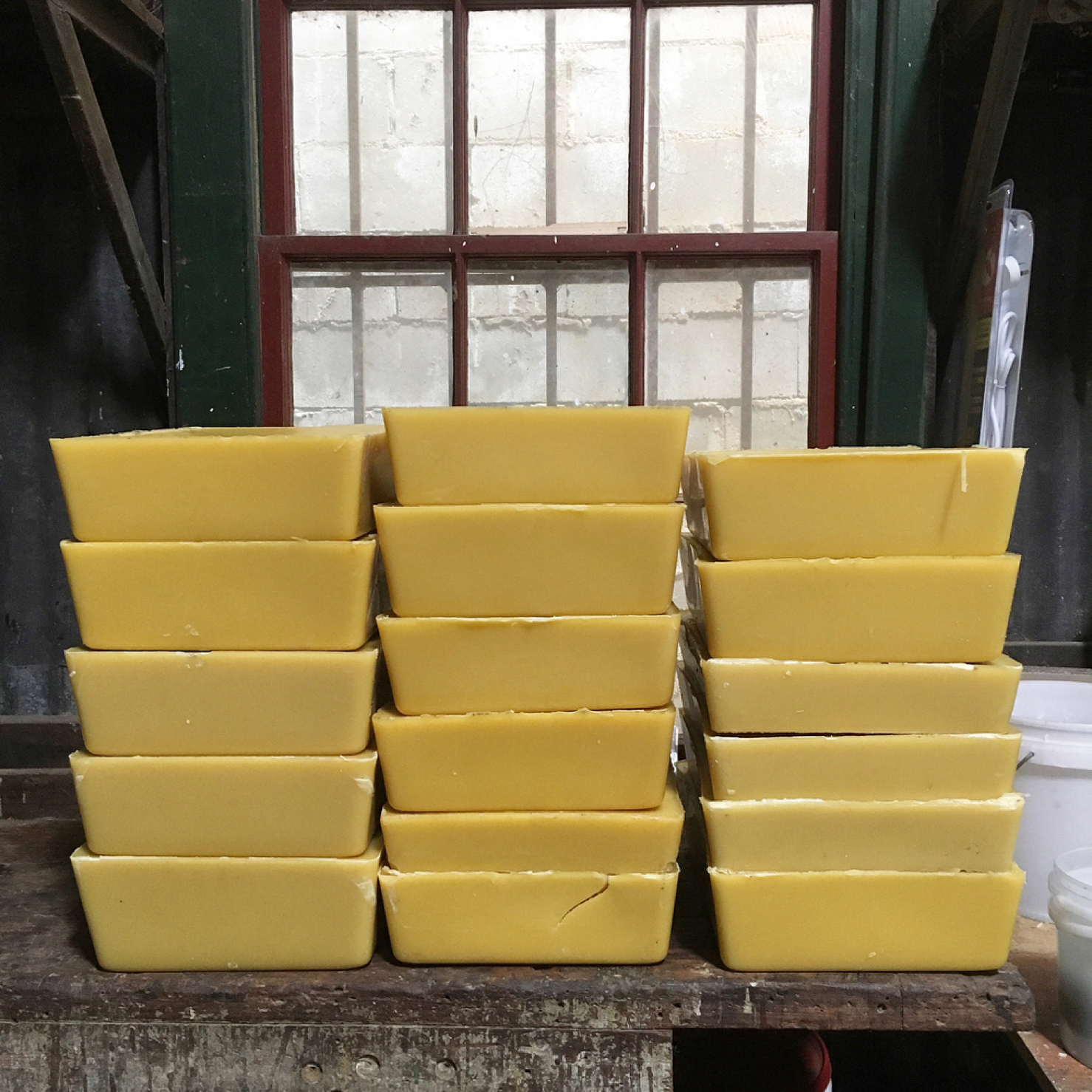
How has Bee One Third been affected by the current state of the world?
Climatically, yes. We have had the worst season on record these last 12 months. Without doubt, the current climatic state of the world is affecting everyone and every living being. The ongoing drought, the recent bush fires and an ever-evolving environmental shift is going to make for a very interesting 2020/2021 season. We are expecting a rather wet winter which will set us and the bees up well for a flourishing spring honey and pollen flow.
When it comes to COVID-19, we had a significant 85 per cent drop-off in business throughout March, however we were very fortunate in April and May to have our loyal neighbourhood pollination partners jump in to help promote the importance of continuing to support the bees and the ecosystem. We celebrated World Bee Day 2020 on 20 May, where we welcomed online viewers for an in-person live experience inside a beehive. We’ve had a great response to our recent autumn harvest, which was small in volume but rich in taste and flavour diversity.
Overall, I feel we are in a fantastic position where we sit within this pandemic situation. After all, the reality is that we as beekeepers cannot stop the work we do, as the country will always need pollinators to help provide pollination for their food supply.
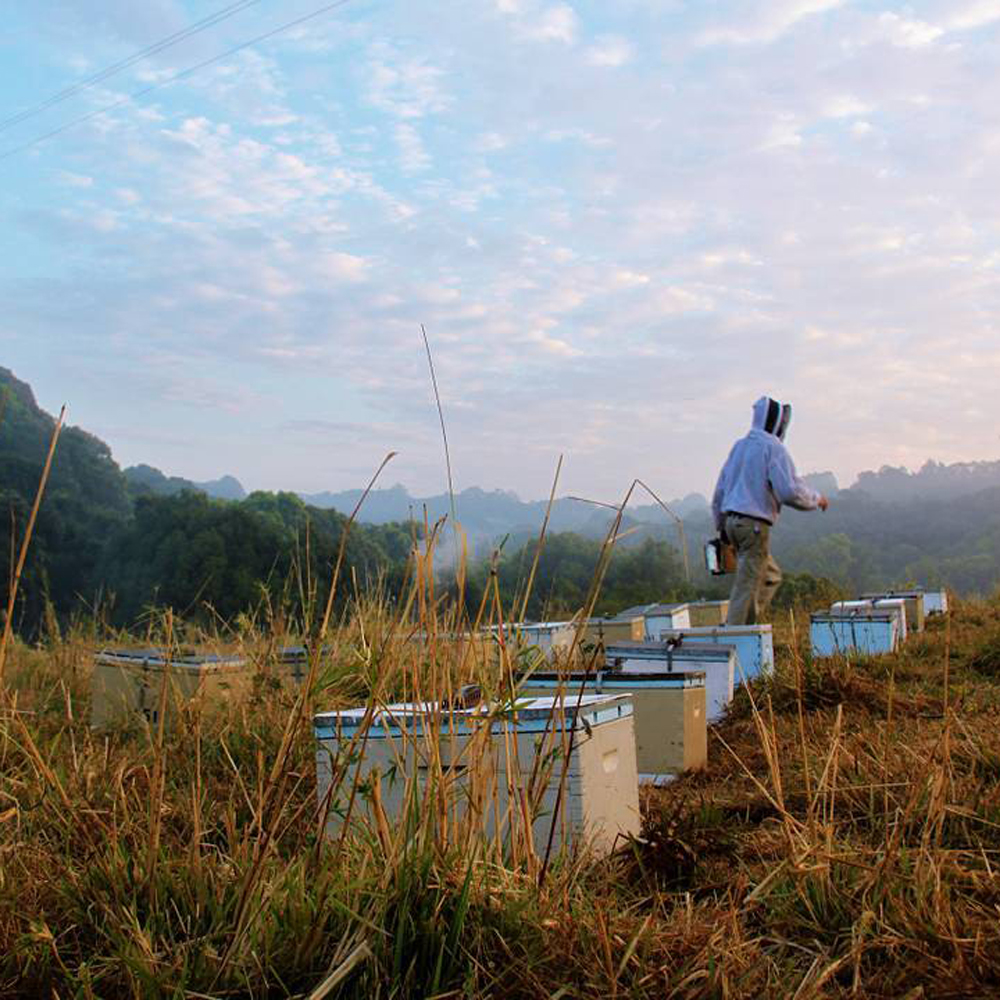
Do you have any exciting projects coming up for Bee One Third?
I’m really excited about the 2020/2021 season, with spring kicking off in August and September, the bees will be keeping us busy until around December and January where we should see our hard work pay off and some beautiful honey coming in. Our main focus next season is to get our bees back up to full strength, as they’ve really been knocked around health-wise this season.
We will be kicking off next season with the re-introduction of our amazing bee-inspired workshops, looking to continue our efforts in educating budding beekeepers and those interested in all things honey, bees and nature around the importance of holistic beekeeping. We are so thrilled to be welcoming a new and exciting team for the 2020/2021 season and will be hiring a new head beekeeper to lead us into what we see as Brisbane’s green revolution.
I am hoping to see the introduction of our first in-school learning hub, which is essentially a budget replica of our Anne Nobel collaboration. We are currently in the midst of finding funding for this project, with a goal of bringing bees into the classrooms of 25 schools in Queensland and New South Wales by 2022. Allowing children to learn in alignment with and from nature is, in my belief, the future of how we should be engaging the next generations. We have in-school models to base our research on from France and New Zealand where, collectively, there are over 125 schools currently using the live beehive in their classrooms to actively learn in alignment with the STEAM curriculum.
